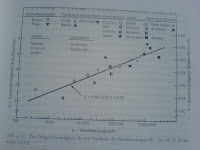At the Museum of the Weird in Austin Lars Erik Holmquist hosted a book launch party for his book: Grounded Innovation: Strategies for Creating Digital Products. The book uses a good number of research examples to highlight the challenges and approaches for digital products. The book has to parts: Methods and Materials and shows how both play together in the design of digital products. There is a preview for the book at Amazon.
Over 10 years back I worked together with Lars Erik on the European Project Smart-Its (http://www.smart-its.org/), where we created sensor augmented artifacts. The book features also some of this work. To get an overview of the project have a look at [1] and [2]. The concept of Smart-Its Friends is presented in [3]. Smart-Its friends proposed the idea, that products can be linked by sharing the same context (e.g. connecting a phones and a wallet by shaking them together).
[1] Lars Erik Holmquist, Hans-Werner Gellersen, Gerd Kortuem, Albrecht Schmidt, Martin Strohbach, Stavros Antifakos, Florian Michahelles, Bernt Schiele, Michael Beigl, and Ramia Maze;. 2004. Building Intelligent Environments with Smart-Its. IEEE Comput. Graph. Appl. 24, 1 (January 2004), 56-64. (PDF) DOI=10.1109/MCG.2004.1255810 http://dx.doi.org/10.1109/MCG.2004.1255810
[2] Hans Gellersen, Gerd Kortuem, Albrecht Schmidt, and Michael Beigl. 2004. Physical Prototyping with Smart-Its. IEEE Pervasive Computing 3, 3 (July 2004), 74-82. (PDF) DOI=10.1109/MPRV.2004.1321032 http://dx.doi.org/10.1109/MPRV.2004.1321032
[3] Lars Erik Holmquist, Friedemann Mattern, Bernt Schiele, Petteri Alahuhta, Michael Beigl, and Hans-Werner Gellersen. 2001. Smart-Its Friends: A Technique for Users to Easily Establish Connections between Smart Artefacts. In Proceedings of the 3rd international conference on Ubiquitous Computing (UbiComp ’01), Gregory D. Abowd, Barry Brumitt, and Steven A. Shafer (Eds.). Springer-Verlag, London, UK, UK, 116-122. (PDF)







